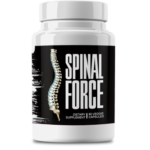This Village-Made Chinese Pain Reliever Eliminates Back And Joint Pain!
Interior Knee Pain: Common Causes & Quick Fixes

Inner Knee Pain: Why It Happens and How to Fix It
That nagging pain on the inner side of your knee? It's more than just annoying—it can throw your entire day off balance. Whether you're a marathon runner, a pickup basketball player, or just someone who overdid it gardening last weekend, inner knee pain doesn't discriminate. The good news? Most cases aren't serious and respond well to simple treatments. Let's break down what's really going on and how to get you moving comfortably again.
Getting to Know Your Inner Knee Pain
Before we talk solutions, let's understand the problem. That tender spot on the inside of your knee (what doctors call the medial side) can act up for several reasons. Sometimes it's a sudden injury; other times, it's wear and tear that sneaks up on you.
What Does Inner Knee Pain Feel Like?
People describe it differently—some feel a constant dull ache, others get sharp stabs when they move wrong. You might notice swelling that makes your jeans feel tight, or hear unsettling clicks when you stand up. If your knee protests every time you put weight on it, that's your cue to pay attention.
Red Flags: When to Call the Doctor
While most knee pain improves with home care, certain symptoms mean you should get medical help:
- Your knee looks like a balloon and feels hot to the touch
- You can't straighten your leg or bend it past 90 degrees
- The pain sticks around longer than your last Netflix binge (about a week)
- You develop a fever along with knee redness
Why Does the Inside of My Knee Hurt?
Your knee is like a complex puzzle—when one piece goes wrong, the whole system feels it. Here are the usual suspects:
The Meniscus Tear: Not Just for Athletes
That cartilage cushion in your knee? It can tear from something as dramatic as a soccer tackle or as simple as twisting wrong when you stand up. If you feel catching or locking when you move, this might be your culprit.
MCL Injuries: The Silent Stability Killer
The medial collateral ligament is your knee's inner bouncer—when it gets stretched or torn (common in sports with sudden direction changes), your knee feels unstable, like it might give out when you walk.
Arthritis: The Slow Creep
Unlike sudden injuries, arthritis is the guest that overstays its welcome. Morning stiffness that eases as you move? Increasing pain with weather changes? Your cartilage might be wearing thin.
Getting to the Bottom of Your Pain
Diagnosing knee pain isn't one-size-fits-all. Your doctor will likely:
Play Detective With Your History
They'll ask about when it hurts (stairs? mornings?), any popping sounds you heard, and whether you remember a specific injury. Be honest about your activity level—weekend warriors count too!
High-Tech Help
Depending on what they suspect, you might need:
- X-rays to check for bone issues (great for arthritis)
- MRI for soft tissue details (like ligament tears)
- Ultrasound for real-time movement views
Fast Relief for When Your Knee's Screaming at You
Need to calm things down quickly? These methods work like a charm:
The RICE Method (No, Not the Food)
- Rest: Take a break from whatever made it worse (yes, even if it's your favorite Zumba class)
- Ice: 15-20 minutes every few hours (frozen peas work great!)
- Compression: A snug (not tight) wrap helps control swelling
- Elevation: Prop it up above heart level when possible
Smart Medication Use
NSAIDs like ibuprofen can take the edge off, but don't pop them like candy—follow the label directions to avoid stomach issues.
Gentle Moves That Help
Try seated hamstring stretches or lying quad stretches—go slow and stop if pain increases. Think of it as coaxing your knee back to health, not forcing it.
Keeping the Pain Away for Good
Once the acute pain settles, these strategies help prevent repeat performances:
Building Your Knee's Support System
Strengthening exercises aren't just for gym rats. Simple moves like straight leg lifts or wall sits build muscles that take pressure off your joints.
Physical Therapy: Your Personalized Roadmap
A good PT doesn't just give exercises—they'll analyze how you move and fix imbalances you didn't know you had.
Daily Habits That Help
Small changes make a big difference: supportive shoes, taking the elevator sometimes, and maintaining a healthy weight (every 10 pounds lost reduces knee stress by 40 pounds!).
Stopping Pain Before It Starts
An ounce of prevention really is worth a pound of cure when it comes to knees:
Warm Up Like You Mean It
Dynamic stretches (leg swings, bodyweight squats) before activity prep your joints better than static holds.
Shoe Smarts
If your shoes look like they belong in a museum, it's time for new ones. Replace running shoes every 300-500 miles, and choose shoes designed for your activity.
When All Else Fails: Surgical Options
For severe cases, modern surgeries can work wonders:
Common Procedures
- Arthroscopy: Tiny incisions to clean up torn cartilage
- Ligament Reconstruction: Replacing damaged ligaments
- Partial Knee Replacement: Just replacing the worn-out section
The Road to Recovery
Recovery times vary, but expect several weeks of taking it easy followed by gradual rehab. Patience is key—your knee will thank you later.
Wrapping It Up
Remember:
- Listen to your body—persistent pain deserves attention
- Start with conservative treatments before considering surgery
- Prevention is always easier than fixing damage
Knee pain might slow you down, but it doesn't have to stop you. With the right approach, you can get back to doing what you love. And if you've found tricks that work for you, pay it forward—share your experience in the comments to help others!








